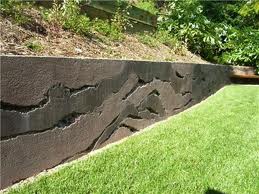
 So, how did your house hold up during the unseasonably wet weather over the past month? There’s nothing like a good downpour to alert you to windows that aren’t quite sealed, gutters that need cleaning or repair, and areas of the house and foundation that trap moisture.
So, how did your house hold up during the unseasonably wet weather over the past month? There’s nothing like a good downpour to alert you to windows that aren’t quite sealed, gutters that need cleaning or repair, and areas of the house and foundation that trap moisture.
Here’s a checklist of some moisture-related observations you may have discovered during the rains that can have a lasting impact on your homes structural integrity and resale value.
• Odors – smells become more apparent when areas become damp or wet. If the odor is musty, it may indicate mold, mildew or rot. If you smell a fetid or musty odor, look behind cupboards, under carpets, on framing and between subfloors, for the source.
• Discoloration, staining or texture changes on walls or surfaces – any change in color indicates moisture damage of some kind, even if the area doesn’t feel wet to the touch. Mold and mildew may appear white, orange, green, brown or black.
• Wood decay and deformed wood surfaces – when wood becomes wet it swells and warps, and may crack when it dries. Advanced moisture damage can result in wood rot, whereby wood fungi penetrate deep into the wood making it soft and weak. Look for mushroom-like growths around warped areas.
• Powdery or chipping concrete and masonry – white rings or a build-up of salt indicate that water has moved through concrete or masonry. Repeated exposure to water can speed up the process of deterioration, causing chipping or crumbling.
There are many common sources of moisture that can lead to damage in your home including:
• non-ventilated bathrooms, or bathrooms not equipped with a fan or exhaust system
• clothes dryers that don’t vent to the outside
• plugged downspouts and blocked foundation drains
• ground that slopes towards the foundation
• construction errors such as flat ledges, inadequate drip edges and insufficient flashing around chimneys
• an ineffective moisture barrier beneath a slab foundation
If you’ve noticed any of these conditions in your home, it’s time to take action before they become a more serious problem. Some of the issues can be resolved by providing adequate drainage to stop areas from becoming wet, or by increasing the air flow to dry the affected areas after rains or activities that produce a lot of moisture, such as showers. Other issues, such as mold or mildew, require more serious interventions.
If you need more information about how to deal with moisture-related problems in your home, or for a professional recommendation for a contractor or mold remediation specialist, please contact me directly at [email protected]. If you’re looking to buy or sell a home and are concerned about what you think might be moisture or water damage, feel free to set up a free consultation with me about what to look for and what your responsibilities are.





Be the first to comment